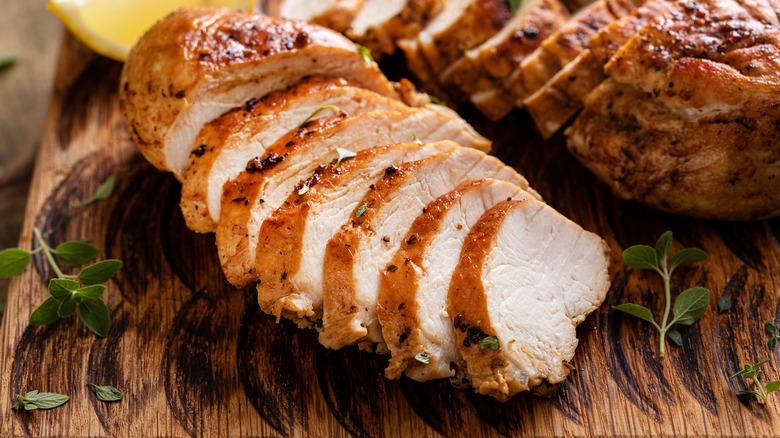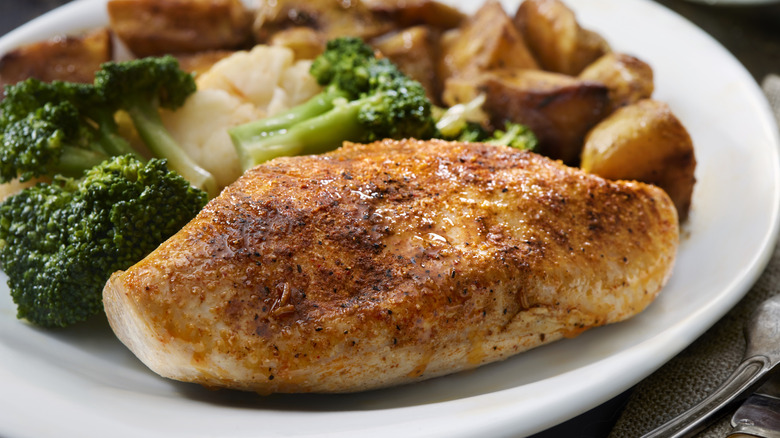The Parchment Paper Trick For Perfectly Baked Chicken Every Time
At least once in your life, you've probably pulled a pan of boneless, skinless chicken breasts out of the oven and found them dried out, stringy, and tough as leather. Unfortunately, it's way too easy to zap the moisture from this particular lean meat. This is due to the lower fat content and less connective tissue in white meat compared to that of darker, more forgiving cuts like thighs.
But before giving up on this poultry cut or even swapping it out for bone-in, skin-on chicken breasts or thighs, consider this: What if you could keep moisture close to the chicken breast as you baked it, just as you might do during basting or steaming? Sure, the skin could have naturally done that, but with a skinless chicken breast, we can look to the dry pantry for one easy trick that can help retain the moisture. Just cover your chicken with parchment paper before you bake it. Simply rub butter or oil on one side of a piece of parchment paper that's large enough for the chicken you're cooking. Cover the chicken completely with the parchment, oil side down, and adjust until the meat is fully tucked in. It's that simple.
Other ways to keep baked chicken breast moist
Cooking chicken in parchment is a game changer for retaining moisture, but there are other methods that provide slightly different (just as juicy) results. If you're loving parchment paper specifically, try baking chicken breast en papillote, which means "in paper" in French. The en papillote method involves wrapping each chicken breast in its own personal envelope of parchment paper so that it steams within the packet. Another reason to try this technique is that you can include other ingredients in the paper with the protein like sauces, herbs, and vegetables. Unwrap the packet when it's finished cooking, tear off a slice of rustic bread, and you have yourself a meal.
There's another moisture-retaining method especially apropos if you're interested in a sweeter flavor profile. This one suggests you use leftover banana peels for juicier chicken. The methodology here is slightly different from parchment paper techniques, but the steaming effect still occurs. If you lay banana peels over, beneath, or around chicken breast as it bakes, the peels release their own juices which transfer to the chicken. The key is making sure that the peels make contact with the chicken itself.
One safety note: Steer clear of this parchment paper method if you're grilling your chicken, in order to avoid a fire hazard. (Here's how to grill chicken breasts without drying them out.) But if it's the oven that's beckoning you, whip out that parchment paper and give it a try.

